Leopoldo Tartarini passed away on 11 September 2015 at his home in the hills outside Bologna, at the age of 83. Tartarini was the founder of Italjet, the small but highly innovative Italian manufacturer which he established in 1960. During its 44 years of existence, Italjet developed more than 150 motorcycle and scooter models, most of them with offbeat designs, and most created by Tartarini himself. He did this while running the company, and in addition to the consultancy work he undertook for more than a decade with Ducati. During that time he helped produce not just Mark lll singles, 750 Sport and 900 Darmah V-twins, and the 350/500cc parallel- twin range, but also the most iconic desmo V-twin to emerge from the Italjet plant: the green-frame 750SS race replica street version of Paul Smart’s ’72 Imola 200-winning factory racer. Its attention-grabbing looks were a perfect example of Tartarini’s style.
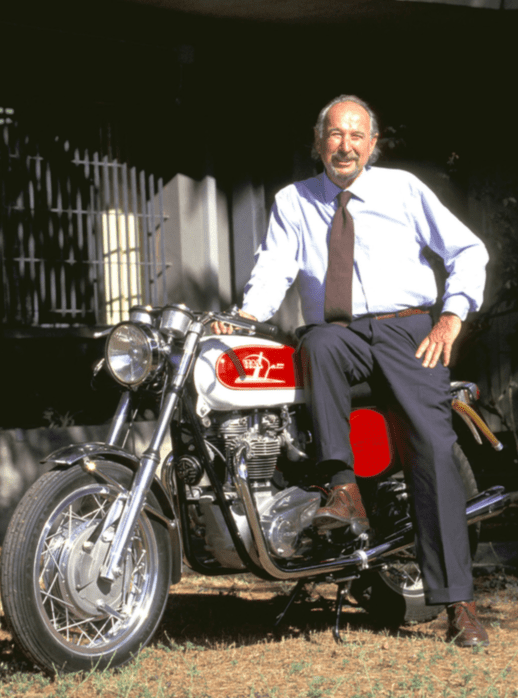
However, when Tartarini’s motorcycle career began at the age of 20 in 1952, it was on three wheels, not two. For that year
he won the sidecar class in the gruelling 18-hour single-stage Milano-Taranto open-roads marathon with a twin-cylinder BSA 650 Golden Flash-engined outfit that he’d designed and built himself. He went on to enjoy further racing success on two wheels, winning the 1953 Milano-Taranto and the 1000km Motogiro, as well as many local hillclimbs and circuit races.
After a test at Monza, Count Domenico Agusta offered him a place in his MV Agusta factory race team for the 1954 GP season. But it was an honour Tartarini had to refuse – his mother asked him to stay home and manage the family motorcycle dealership. He acquiesced, still managing to win the Milano-Taranto and the Motogiro for a second time. Fortunately, Tartarini was soon given an opportunity closer to home at the Ducati factory in Bologna. He signed on as a works rider and development engineer, working alongside another new arrival, the legendary chief designer Fabio Taglioni. A severe injury, which
at one point threatened to leave him paralysed, brought Tartarini’s racing career to a premature halt, but he kept riding, embarking upon a year- long adventure as a publicity stunt for the Italian firm in the company of Ducati’s export sales manager, Giorgio Monetti. Together, the pair completed a 13-month, 60,000km round-the-world trip aboard two 175cc Ducati singles, visiting 42 countries in five continents. They left Bologna in September 1957, rode to India, then Australia, New Zealand, South America, North Africa, and through Europe to Italy again.
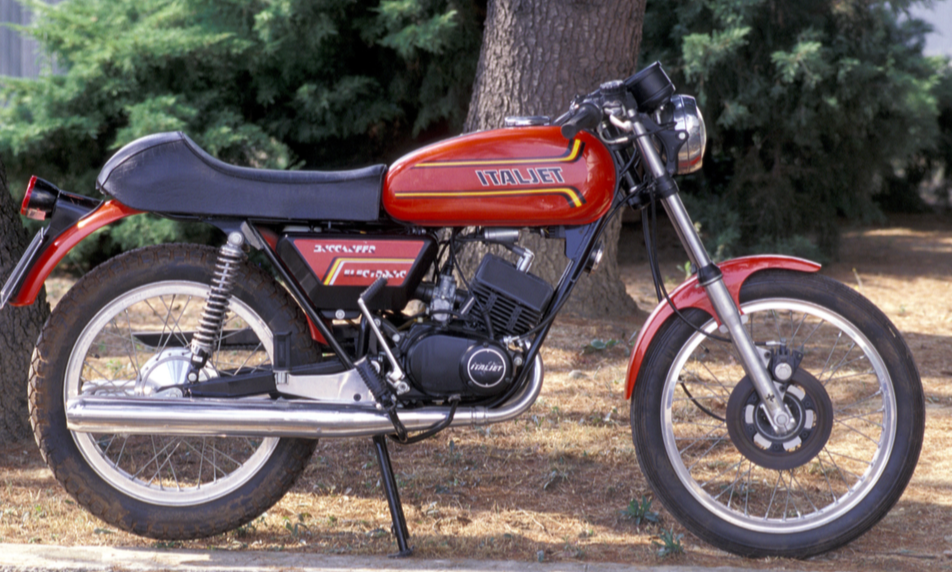
Back home in Bologna, the exuberant Tartarini was ready for a new challenge. Rather than merely sell motorcycles others had built, he wanted to construct his own. So in February 1960 he founded the company that was eventually renamed Italjet, building MZ and Minarelli-powered café racers.
Tartarini was then commissioned by BSA- Triumph management to develop a prototype lightweight model carrying the Ariel badge and powered by a 160cc two-stroke Minarelli engine, which was intended to replace the elderly BSA Bantam best-seller. The project never reached production, but it did introduce Tartarini to the British firm, leading to the creation of the 650cc Bonneville-powered Italjet Grifon – an Italian-built production version of the Triton café racer then already popular as a homemade special in Britain.
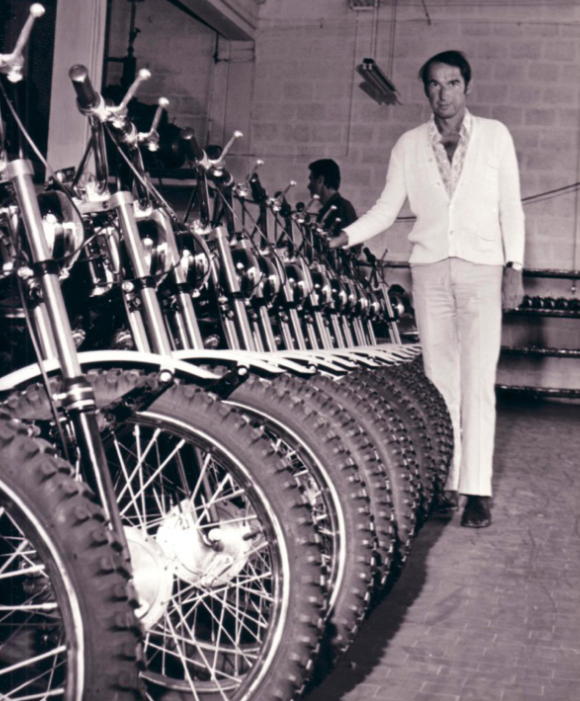
Around 300 such bikes were sold in Italy, and a similar number shipped to the USA and Australasia. Although more expensive than the stock 650 Bonneville, they found a ready market. High- performance British bikes with Latin looks proved
a winning combination.
Italjet’s successful early 60s range of innovative minibikes included more humble models with ‘swinging’ names like the Franco Morini-engined 48cc Kit Kat and its small-wheeled counterpart, the Go-Go. Together with the Grifon, these machines brought Italjet to the attention of American motorcycling entrepreneur Floyd Clymer. He initially commissioned Tartarini to manufacture 100 Minarelli-engined 50cc minibikes as gifts for the US dealers he’d signed up to distribute the Indian range of bikes he was developing in conjunction with Friedl Münch in Germany (Clymer owned the trademark).

In keeping with the Indian theme it was named the Papoose, and was so successful that Italjet ended up building more than 15,000 of these baby Euro-bikes for the US market. On the back of this project, Clymer also commissioned Tartarini to build full-size Indian motorcycles. These were based on the Italjet Grifon design, but fitted firstly with Royal Enfield Interceptor 750cc parallel-twin engines (of which just 50 were made), then with the Velocette Venom and Thruxton 500cc OHV single powerplants, of which 150 were built and sold mainly to the USA. In 1970, Clymer’s death brought an end to the Indian Velo project.
By this time, Leopoldo Tartarini’s talents for building good-looking, fine-handling two-wheelers of all capacities were well established, and his restless imagination and capacity for innovation began extending to other fields. The Pack-A-Way was a 50cc moped that could be folded up into a package complete with carrying handle, the prototype of which found its way to New York’s Museum of Modern Art. It became a must-have accessory for sailors, campers and owners of large cars with big boots. In 1980, Italjet moved into the trials world, with purposeful 250/350cc models powered for the first time by the firm’s own engines, specially developed for their light weight and compact build. American former World Champion Bernie Schreiber rode one to second place in the 1981 World Trials Championship.
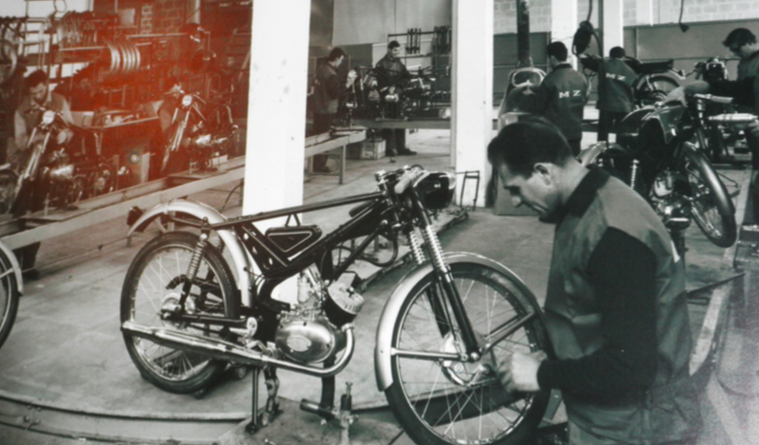
Tartarini foresaw the late 20th century scooter boom, and from 1980 onwards Italjet was well positioned to meet the demand for personal transportation. It established a unique reputation for innovative and quirky models, such as the retro-look Torpedo and Velocifero, the avant-garde hub-centre Dragster, which debuted in 1995, and the 125cc Formula introduced in 1994, which for many years was the only twin-cylinder small- capacity scooter in the marketplace.
With 180 workers producing up to 90,000 powered two-wheelers annually in the firm’s modern 10,000m2 factory on the Adriatic coast near Pescara, Italjet successfully surfed the success of the European scooter boom through the 1990s. This fuelled a revival of the company’s sporting traditions with the debut of its own 125GP racer in 2000 ridden by current World Superbike star Leon Haslam, making his Grand Prix debut at the age of 16, and Czech rider Jaroslav Hules. But the company’s sudden financial troubles forced Italjet to pull out of racing in 2003.

Those same money troubles forced Italjet to cancel its acclaimed Triumph-engined three- cylinder Grifon motorcycle project, which had been launched at the 1999 Milan Show. This would have been Italjet’s first large-capacity motorcycle in 35 years, a modern day revival of the 650 Grifon but powered by the Bloor-era 900cc Triumph three-cylinder engine. The Grifon 900 was set to become the first ever motorcycle to be built outside Hinckley powered by Triumph engines supplied under an official agreement with John Bloor himself. But the collapse of the Lira in the months before Italy joined the Euro meant the project was cancelled – the unfavourable exchange rates meant the engines simply cost too much to buy for the bike to be sold at a competitive price.
Tartarini’s final Italjet creations debuted at the 2001 Milan Show, including the three-wheeler Scooop, which delivered stability in turns thanks
to the twin front wheels steered by a handlebar, yet allowed the rider to lean into curves on the pivoting vehicle. After Italjet’s demise, the Scooop project was acquired by Piaggio, and duly became the acclaimed MP3 on sale today.
The sudden collapse of the European 50cc scooter market led to Italjet entering administration in 2003, with its Pescara factory and the firm’s Bologna HQ both closed. The majority of its product line was sold by the receiver to Kinetic in India, where various Italjet models continue to resurface. It was a sad end to the history of one of Italy’s most innovative and individual marques.
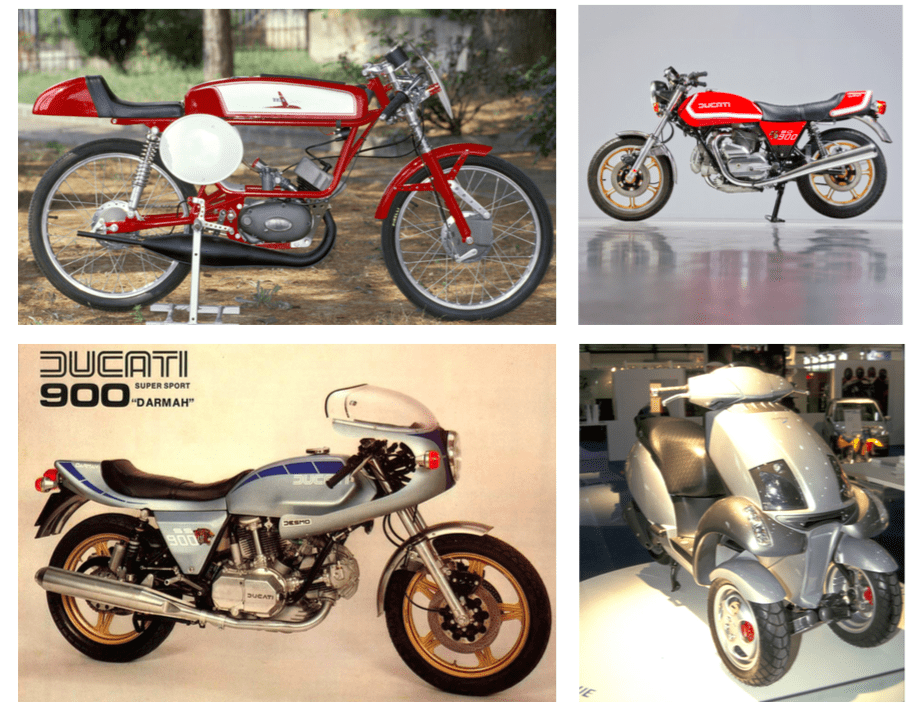
But that wasn’t the end for Tartarini. With innovative new designs still flowing from his creative mind, he founded the Tartajet design consultancy focusing on the development of advanced concepts for his clients around the world, including major manufacturers in Europe and Asia.
These and Italjet’s range of quirky, innovative models produced over its 44 years of existence stamped this passionate enthusiast as a top designer and a creative free spirit, able to think outside the two-wheeled envelope with consistent success. Leopoldo Tartarini was a true gentleman – in the English style, and not only for his love of Jaguars and Triumphs! – with a modest and convivial personality, yet he possessed a depth of vision and a thirst for innovation which resulted in a succession of products unlike anything else in the marketplace.

The inventor of several new concepts in the personal transportation sector, Leopoldo Tartarini succeeded in making scooters fun, as well as technically enticing, and stylistically chic. He will be very much missed, and our sympathies go to his wife Giorgia and sons Massimo and Riccardo.
By Alan Cathcart











